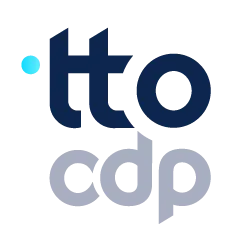How Google Ads AI Solutions Redefined Banco Azteca's Digital Growth
The financial sector in Latin America is undergoing a rapid digital transformation, driven by changing consumer behaviors and the increasing demand for seamless digital experiences. Banco Azteca, a leading financial institution in Mexico, faced a critical challenge: shifting from traditional banking growth to a digital-first approach while maintaining efficiency and customer engagement. The solution? Utilizing Google Ads AI solutions to reimagine its digital marketing strategy.
Google’s AI-driven Commerce Media suite, including tools like Broad Match, Value-Based Bidding, and dynamic budget allocation, has become a game-changer for businesses seeking smarter, more scalable marketing strategies. Banco Azteca’s collaboration with Zenith agency to implement these AI-powered solutions not only optimized its digital loan acquisition process but also set a benchmark for AI adoption in emerging markets. This case study explores how Banco Azteca harnessed AI to achieve remarkable growth, offering valuable insights for financial institutions worldwide.

I. Banco Azteca’s Digital Transformation Strategy
To achieve its ambitious goals, Banco Azteca collaborated with Zenith to deploy AI-powered marketing tools that would enhance both reach and efficiency. The strategy revolved around three key Google Ads AI solutions: Broad Match, which expanded ad visibility by targeting semantically related search queries; Value-Based Bidding, which prioritized conversions with higher financial returns; and flexible budgeting, allowing real-time adjustments based on performance data.
The primary objective was to shift from traditional, broad-reach marketing to a data-driven approach that attracted customers with a higher propensity to convert. Unlike conventional methods that relied on static keyword lists and fixed budgets, Banco Azteca’s AI-powered system dynamically adapted to user behavior, ensuring ads were shown to the most relevant audiences. This not only improved lead quality but also maximized return on ad spend (ROAS). By integrating AI into its digital marketing framework, Banco Azteca positioned itself at the forefront of financial innovation in Latin America.
II. Implementation and AI-Driven Optimization
The success of Banco Azteca’s transformation hinged on the seamless integration of AI tools into its Google Ads marketing operations. Broad Match played a pivotal role by analyzing search intent beyond exact keywords, allowing ads to appear for related queries that still signaled strong purchase intent. For instance, a user searching for "quick personal loans" might also see Banco Azteca’s ads if their search behavior aligned with the bank’s target profile.
Meanwhile, Value-Based Bidding ensured that the bank’s ad spend was allocated toward conversions that delivered the highest value. Instead of treating all leads equally, the AI model assessed factors like loan size and customer lifetime value, optimizing bids accordingly. This precision reduced wasted spend on low-value prospects while increasing conversions among high-potential customers.
Finally, dynamic budget allocation enabled real-time adjustments. If certain campaigns outperformed others, the AI system automatically reallocated funds to capitalize on the best-performing channels. This flexibility proved vital in a competitive market where consumer behavior shifts quickly. Together, these AI-driven optimizations within Google Ads created a marketing engine that was both efficient and scalable.
Topkee’s keyword research services further enhance this by leveraging advanced analysis tools and competitor benchmarking to identify high-value keywords, ensuring campaigns align with user search behavior while optimizing reach and relevance. Topkee’s TTO initialization settings enable similar precision by synchronizing media budgets across multiple advertising accounts and automating conversion event tracking. Additionally, TM settings provide granular campaign monitoring through customizable tracking templates, ensuring budget adjustments are data-driven and aligned with performance metrics. Together, these AI-driven methodologies, supported by Topkee’s end-to-end services, create a scalable and high-performance marketing engine.
III. Results and Business Impact
The impact of Banco Azteca’s AI and Google Advertising adoption was transformative. Digital loan acquisitions surged by 75%, while the cost per loan dropped by 9%, demonstrating that AI could drive growth without proportionally increasing expenses. More importantly, the digital channel’s contribution to total loans skyrocketed by 29 percentage points, cementing its role as a primary revenue driver rather than just a supplementary service.
Ricardo Figueroa Olvera, Digital Marketing Manager at Banco Azteca, emphasized the strategic benefit: “We foster prosperity through simplicity, all thanks to Google’s solutions.” The bank’s capacity to reallocate resources from traditional channels to digital campaigns underscored AI’s role in future-proofing marketing strategies. Beyond immediate financial gains, Banco Azteca’s success illustrated how Google Advertising could reshape customer acquisition in financial services, making processes faster, smarter, and more cost-effective.

IV. Comparative Perspectives from Global AI Marketing Cases
Banco Azteca’s story is not isolated—AI-driven marketing is delivering remarkable results across industries and geographies. In Turkey, snack brand Ülker leveraged AI-powered app campaigns to integrate with supermarket app İstegelsin, resulting in a fivefold increase in ROAS and a 50% reduction in cost per sale. By analyzing user behavior within the app, Ülker optimized ad placements to target high-intent shoppers, proving that AI excels in hyper-personalized retail marketing.
Similarly, Japan’s LINEMO, a mobile carrier under SoftBank, tapped into AI to engage foreign residents in their native languages. Traditional assumptions suggested that most foreigners in Japan could navigate services in Japanese, but AI-powered surveys revealed strong demand for localized content. By deploying multilingual ads and optimizing landing pages with AI translation tools, LINEMO saw a 25% drop in customer acquisition costs and a surge in subscriptions from non-Japanese users.
These cases highlight AI’s scalability and adaptability—whether in financial services, retail, or telecom, AI-driven strategies consistently outperform traditional methods by delivering precision, efficiency, and deeper consumer insights.
V. Future Trends and Strategic Recommendations
As AI keeps advancing, its function in financial marketing will grow even more extensive. Key trends include:
- Real-time data utilization: AI’s ability to process vast datasets in real time will enable banks to refine targeting and personalize offers instantaneously.
- Adaptive budgeting: Dynamic budget allocation will become standard, allowing marketers to shift resources fluidly based on performance.
- Cross-channel integration: AI will unify marketing efforts across search, social, and video platforms, ensuring cohesive customer journeys.
For financial institutions, the urgency is evident: Embrace AI-powered strategies immediately, or risk being left behind. Banco Azteca’s success demonstrates that AI is not just a tool for optimization but a strategic differentiator that can redefine business growth.
For example, platforms like Topkee’s TTO tools leverage real-time attribution to refine ad placements dynamically, ensuring offers align with user intent at every touchpoint. Tools like Topkee’s remarketing strategies exemplify this by linking user behavior data from multiple sources to deliver cohesive, omnichannel customer journeys. Brands can adopt Topkee’s solutions to harness AI’s full potential, ensuring precision, scalability, and sustained market relevance.

Conclusion
Banco Azteca’s AI-powered transformation underscores a broader shift in digital marketing—where data-driven strategies powered by artificial intelligence are redefining success. By leveraging Google Ads AI solutions, the bank achieved unprecedented growth in loan acquisitions while reducing costs, proving that AI is a catalyst for competitive advantage in emerging markets.
The lessons extend beyond banking. Whether in retail, telecom, or other sectors, AI’s ability to enhance precision, efficiency, and scalability makes it indispensable for modern marketers. For businesses ready to embrace this change, the opportunity is immense.
If you’re considering AI-driven marketing strategies for your organization, consult with experts to tailor solutions that align with your goals. The future belongs to those who harness AI’s potential today.







